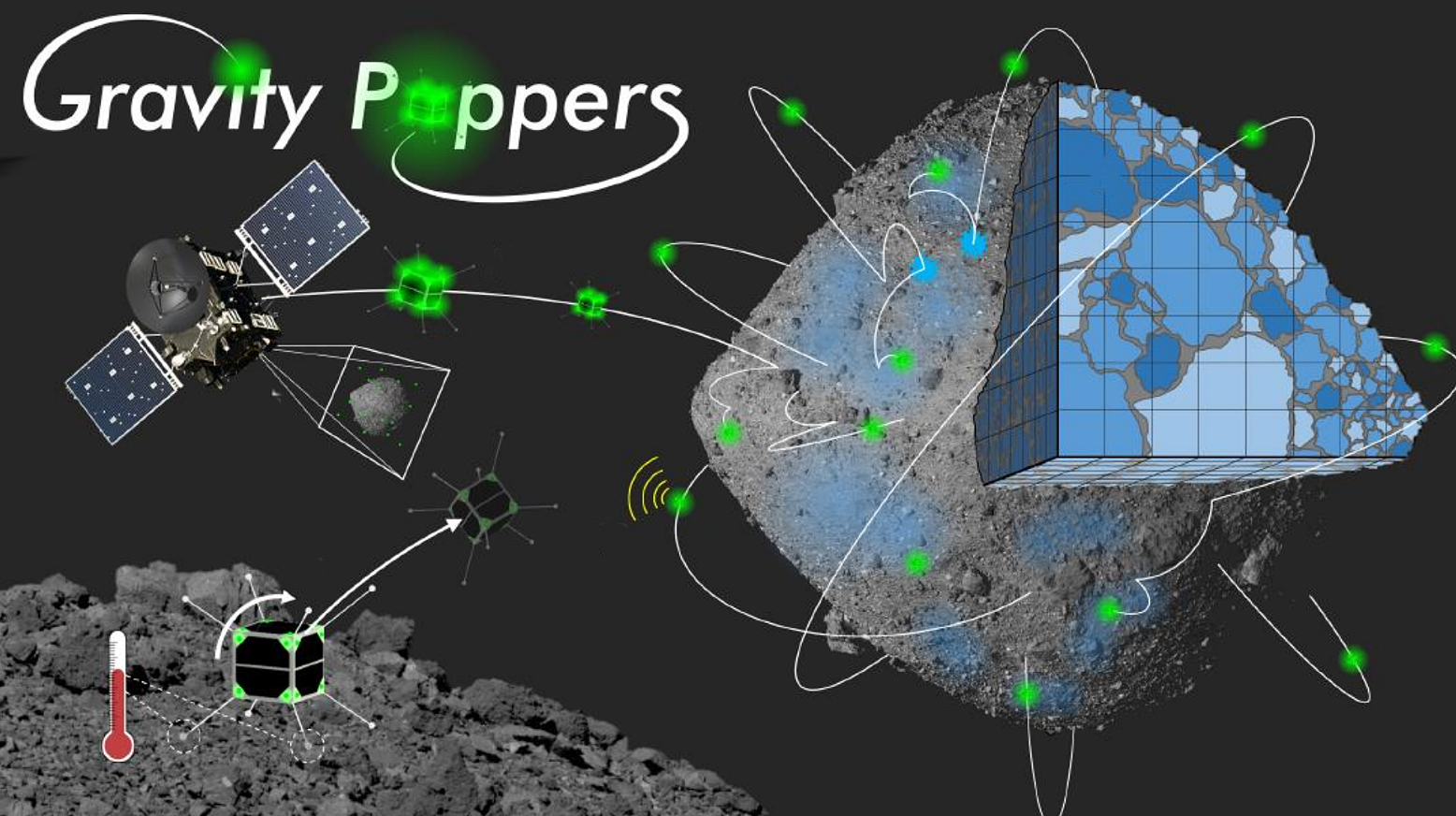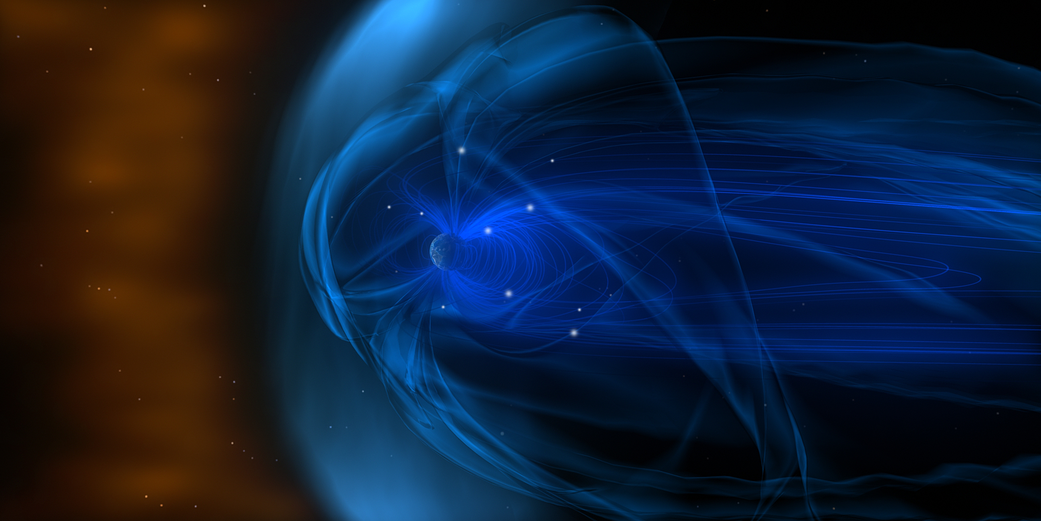Benjamin Hockman
NASA Jet Propulsion Laboratory
The goal of this effort is to develop a robust and affordable mission architecture that enables the gravimetric density reconstruction of small body interiors to unprecedented precision. Our architecture relies on the novel concept of “Gravity Poppers,” which are small, minimalistic probes that are deployed to the surface of a small body and periodically “pop” so as to perpetuate a random hopping motion around the body. By tracking a large swarm of poppers from orbit, a mother spacecraft can precisely estimate their trajectories and continuously refine a high-resolution map of the body’s gravity field, and thus, its internal mass distribution. Hopping probes are also equipped with minimalistic in-situ sensors to measure the surface temperature (when landed) and strength (when bouncing) in order to complement the gravity field and build a more accurate picture of the interior. The Phase I study focused on feasibility assessment of three core technologies that enable such a mission: (1) the mechanical design of hopping probes to be small, simple, robust, and “visible” to a distant spacecraft, (2) the tracking strategy for detecting and estimating the trajectories of a large number of ballistic probes, and (3) the algorithmic framework by which such measurements can be used to iteratively refine a gravity model of the body. The key finding was that the concept is feasible, and demonstrated to have the potential to resolve extremely accurate gravity models, allowing scientists to localize density anomalies such as “weighing” large boulders on the surface. This Phase II Proposal aims to further develop these three core technologies through continued mission trade studies and sensitivity analysis, case studies for simulated missions, and hardware prototypes demonstrating both hopping behavior and tracking performance.





























